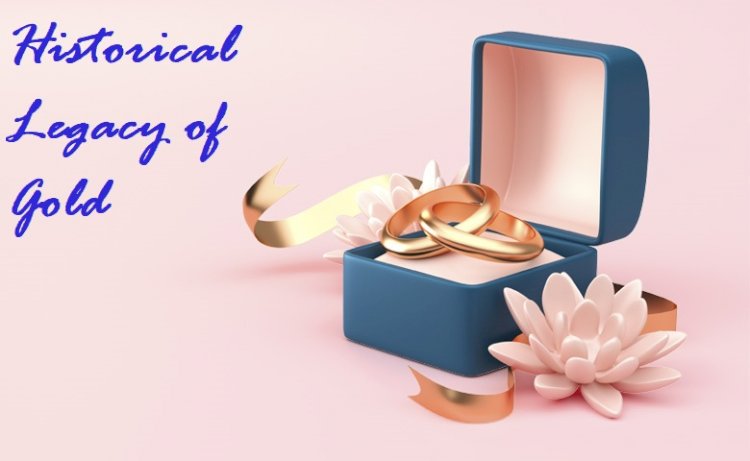The Impacts of Gold on History and Culture

Exploring the Annals of Time: Gold Jewelry's Development Since the dawn of civilization, gold jewelry has played a significant role in human societies. The ancient Egyptians were among the first civilizations to recognize the special qualities of gold, using it to fashion intricate and symbolic designs. They considered gold to be the celestial representation of the gods and only used it for regal and sacred purposes.
As time went on, numerous empires and civilizations, including the Greek, Roman, and Byzantine, adopted gold jewelry as a sign of status and prosperity. As goldsmiths improved their skills, they created ever-more elaborate and intricate designs that displayed their mastery of the metal.
Cultural Significance: Gold Jewelry as an Expression of Identity and Tradition Gold jewelry has various cultural meanings and significance. Gold has long been prized in India, where it is used in religious and cultural celebrations as well as a symbol of wealth. As an illustration of the significance of the metal in the context of marriage and familial ties, bridal jewelry is frequently made of gold.
Gold jewelry plays a significant role in the social status, spiritual protection, and individual identity of many African cultures. Gold was highly valued for its religious and ceremonial significance by pre-Columbian Mesoamerican civilizations, who created elaborate gold artifacts to honor their gods.
The Mastery of Goldsmithing: A Tribute to Talent and Ingenuity The illustrious history of gold jewelry serves as a testament to the talent and inventiveness of goldsmiths dedicated to their trade. Casting, engraving, filigree, chasing and repoussé, and granulation are just a few of the techniques used by goldsmiths to create stunning pieces of jewelry that reflect the social milieu and aesthetic preferences of their time.
A legacy of creativity and innovation has been left for future generations to enjoy by goldsmiths throughout history as they have experimented with various alloys, gemstones, and enameling techniques to increase the appeal and durability of their works of art.
The allure of gold jewelry endures in modern times as people continue to appreciate its timeless elegance and special capacity to evoke a sense of luxury and refinement. Gold Jewelry in the Modern Context: A Timeless Emblem of Elegance and Prestige. The intrinsic value of gold, its cultural significance, and the artistry of the artisans who create these exquisite pieces all contribute to the value of gold jewelry.
Modern goldsmiths create distinctive pieces that appeal to modern tastes while paying homage to historical traditions, preserving the rich history of gold jewelry.
The intriguing past and cultural significance of gold jewelry serve as a reminder of the all-pervasive fascination with this precious metal and its unparalleled power to enthrall the human spirit. Gold jewelry has been prized as a representation of wealth, power, and artistry since the dawn of human civilization. The legacy of gold jewelry will endure as goldsmiths continue to experiment with new techniques and designs, capturing the essence of human creativity and our enduring passion for this priceless treasure.

 content-team
content-team 


















